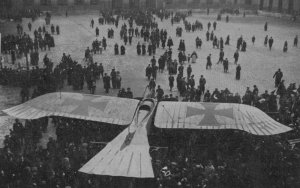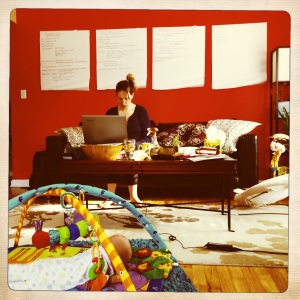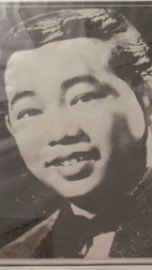Over the years, when discussing the kind of work that I do, I’m often asked one of two questions: (1) How did you get into documentary film? (2) Why the interest in SE Asia?
At this point, I have been asked these questions so many times, that I often end up giving what I think is some fairly stock borderline boring answer about how I was asked by a colleague to help him shoot a film for six months in Cambodia, whereupon I would soon discover what would become two of the biggest passions in my life: (1) documentary filmmaking (2) SE Asia
Thing is, whenever I give this short, rather benign anecdote, I’m usually surprised by the reaction that people tend to have, which is generally one of interest and sometimes even inspiration.
Me? Inspiring? Yeah, I usually am just as surprised by this! But, you know, sometimes I’ll take a moment and try and understand how someone could be excited or inspired by my story of how I got into this whole thing… and I think that I can understand. It’s less about being inspired by me – thankfully! – and more about being inspired by something that we all tend to be inspired by: seeing or hearing about someone who is living out their dreams.

Mixing and Booming in Cambodia
Whenever you hear about someone talking about their dreams and passions – whether it’s doing some humanitarian work in a remote part of the world, creating a beautiful garden in one’s own backyard, winning an Olympic gold medal, or fixing up an old car – it’s hard not to be moved by what they’re saying. You can hear in the tone of their voice, the gleam in their eye, or the glowing energy that seems to surround them, that they love what they are talking about. And moreso, that they love it in a way that is usually reserved for a favourite pet or maybe even their firstborn!
And often, just by being around this energy and hearing about someone’s passions or dreams, it moves us to maybe even contemplate our own. And to think that maybe, just maybe, we can, and SHOULD, be living our own dreams. We all can relate to that, right?
So how did I start following my dreams? Well, first of all, I should tell you that it took awhile. It didn’t happen fresh out of university. It didn’t even happen in the first decade out of university! No, it wasn’t until my mid-30s, after I’d worked a wide variety of jobs like dee-jaying at a strip club, writing/editing for an online health website, bartending, and valeting, just to name a few. None of these were remotely even close to my dream jobs or dreams – though some of my guy friends were certainly envious of the aforementioned dee-jaying gig – as much as they were a means to pay the proverbial bills. Sure, there were a few along the way that I didn’t hate, but by and large, I just sort of blindly went from year to year and job to job, feeling largely unsatisfied with what I was doing with my life, vocation-wise.
The whole time that I was working whatever job I was working, I was keenly aware that I was not doing what I was longing to do: film. I had probably known since my senior year of college, at the State University of New York College at Fredonia that I wanted to do something in film. My course of studies was in Communications/Media, and the course load was basically radio and television broadcasting. For years, I had thought that I wanted to work in radio – I’d done on-air work since I was 13 years old at our high school, which was one of the last to actually have a radio station, WBKT (Brockport, New York). Somewhere during my junior year at Fredonia, I started to see commercial radio for what it was: commercial bullshit. And that, ultimately, simply being a dee-jay was absolutely not going to fulfill me, creatively or spiritually. I was going to need something a bit more substantial.
It was during my final year in college, while as an independent study, along with two other colleagues, I co-wrote, co-directed, and edited a feature video/film (called ‘The Unorthodox Courtship of Adria Quinn’). Those last two furious weeks of editing at the end of the semester were some of the happiest in my life, at that time. The filmmaking dream seeds were definitely sown during those days.
Eventually, this would culminate into a rather deep unhappiness which, of course, would start to bleed into personal aspects of my life, til one day I’d woken up and realised that my unhappiness was taking its toll not only on my well-being but it was affecting my friendships and family relationships. (Love life? Yeah, we won’t even get into that!)
Anyhow. Happiness. Or the lack thereof. Throughout much of my 20s and early 30s, it was very much tied into what I was – or more aptly wasn’t – doing with my life. Making movies. At least, for a living. (I’d written and directed and produced another full length digital feature, Cascades, but that was still a bit before I was actually able to do for a living.)
In the summer of 2003, I found myself in the second year of working in the hotel business. I had worked my way up from parking cars as a valet for a hotel to being a supervisor of a staff of people parking cars as valets for a hotel. My time was mostly spent parking cars, writing bad poetry and less-than-stellar screenplays, and hanging out at bars with friends. Later in the summer, my roommate/landlord, Steve Fitzpatrick, approached me with the proposition that would forever change the trajectory of my life. He had recently been awarded a Fulbright Scholarship to go spend six months filming people in a post-conflict country (Cambodia) who were making their meager livings by digging up and disassembling unexploded ordnance (UXO). He was set to leave in a month’s time with his tiny documentary crew, only it now looked like his sound guy wasn’t going to be able to go. He wanted to know if I’d be interested and willing to leave my job and go and do sound for him on what would end up being a film called Bombhunters.

Award-winning film still from ‘Bombhunters’
There are times in one’s life where they know with every cell of their body what their decision to an important questions will be. And this was one of those times. Leave my miserable, unsatisfied life of valeting and shitty poetry for the chance at making a film on the other side of the globe? Uh, yes, please. Sign me up right bleeping now! And so it took me all of about five minutes before giving him a resounding ‘yes’.
Within weeks I was on a plane bound for a country I knew nothing about, with a guy I didn’t really know, and with very little money in my pocket. But I was embarking on a great journey with many lessons and with life-altering consequences, and for that I would be forever grateful…
(Tune in next week for the Part II of ‘Living Your Dreams’!)















